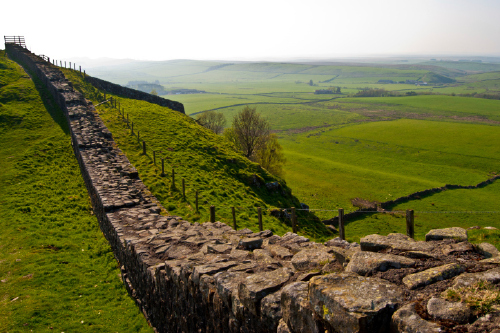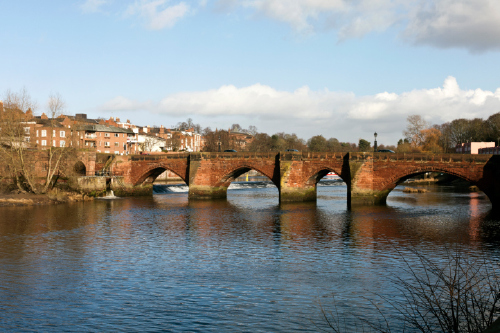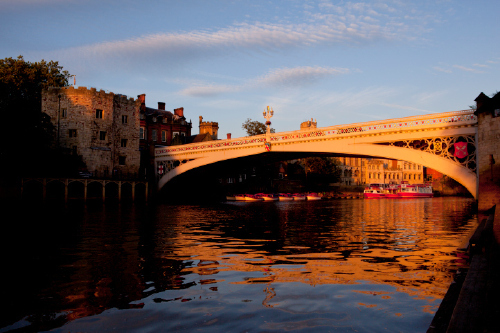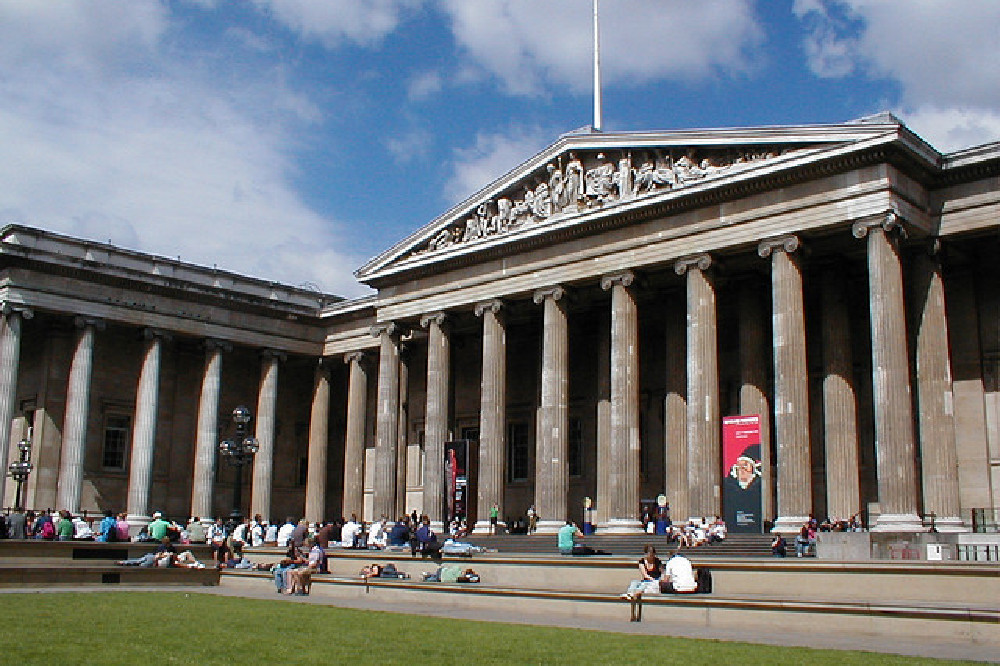
Bath has some of the best Roman-esque buildings and spas
Later this month, the British Museum will present a major exhibition on the Roman cities of Pompeii and Herculaneum. Since their arrival in England in 43 AD, the Romans have certainly left their mark on the country.
They founded Londinium (London) and built military roads. Within ten years, Roman rule had reached far into the territories of England and changed the life of its people forever.
The Roman’s influence can still be seen today; here VisitEngland highlights spots where visitors can step back in time to a land of pagan gods, tribal warfare and awe-inspiring architecture.
Hadrian’s Wall
 Hadrian's Wall is an iconic Roman-influenced landmark in England
Hadrian's Wall is an iconic Roman-influenced landmark in EnglandWhen it comes to Roman walls there’s no beating the 75-mile-long barrier built in Northumberland on the orders of the Emperor Hadrian. Hadrian's Wall is like something out of a fairytale; along its route, forts and castles are two-a-penny and, when you’re not dodging sheep and cows, you’ll stumble across turrets, created for defending England against the Picts, and ancient stone circles, created for... well, no one's quite sure.
2013 marks the 10th anniversary of Hadrian’s Wall Path National Trail, an unbroken trail stretching from coast-to-coast, from Wallsend in the east to Bowness-on-solway in the west. A new visitor centre is due to open at Housesteads in time for the anniversary in May.
The National Trust is working in partnership with English Heritage on the £1m project, which will result in a new café, shop and welcome area for visitors. There’ll be a major new audio visual exhibition in place, exploring life on the Roman frontier.
For more information, visit www.nationaltrust.org.uk/hadrians-wall
Chester
 Chester carries an intriguing old-world charm waiting to be enjoyed
Chester carries an intriguing old-world charm waiting to be enjoyedThe walled city of Chester too offers visitors an atmospheric Roman experience. Take a wander through the ruins of the largest Roman Amphitheatre in Britain, used for entertainment and military training by the 20th Legion, who were based at the fortress of 'Deva' (Chester).
You’d never guess that blood-thirsty gladiators battled it out on this peaceful grassy spot. Excavations in 2004-5 revealed two successive stone-built amphitheatres with wooden seating, all of which you can visit for free.
Alternatively, take a stroll along Chester’s stone walls, built to keep trouble makers out. Taking history off the page, enjoy a light-hearted journey through the city with a real Roman.
Bespoke guided Roman Tours with your very own soldier last approximately 1.5 hours and include entry to an exhibit of the living room of a Roman centurion who lived in Chester (Dewa Victrix).
Tour costs £5 for adults and £4 for children. If all that walking makes you hungry, have a jacket potato filled with a good dose of heritage. Located in the basement of Spud-U-Like on Bridge Street are the remains of Chester’s legendary Roman baths. This interesting relic is truly one of England’s hidden gems.
Bath
 Bath has some of the best spas and roman-esque buildings
Bath has some of the best spas and roman-esque buildingsIn between conquering and pillaging, the Romans enjoyed their pleasures and, in Bath, they created a magnificent temple and bathing complex around England’s only hot spring. In Roman England, this was the place for rest and relaxation - a tradition you can still experience today at Thermae Bath Spa.
Reap the benefits of the mineral-rich waters like the Romans did over 2000 years ago. The open-air rooftop pool has incredible views across Bath. Spa sessions start from £26 per person.
For more information or to book, visit www.thermaebathspa.com
York
 York is an English city with significant ties to the Roman Empire
York is an English city with significant ties to the Roman EmpireYork was selected for serious work. Known then as Eboracum, York was the political heart of the Roman Empire during two periods 100 years apart, and two Roman Emperors lived and died here.
Although not much still remains of the era, pieces of the Roman walls remain intact, including the Multangular (ten-sided) Tower in the city's Museum Gardens. Entry costs £7.50 for adults but children under 16 are free.
For more information, visit www.yorkshiremuseum.org.uk
Lullingstone Villa, Kent
 Lullingstone Villa is well worth a visit - image courtesy of carolemadge1 on Flickr
Lullingstone Villa is well worth a visit - image courtesy of carolemadge1 on FlickrAmong the most outstanding Roman villa survivals in England, Lullington dates back to around 100 AD and is set in the attractive surroundings of the Darent Valley in Kent. Visitors to the villa today can view spectacular mosaics and rare wall paintings, plus a heated bath-suite.
A specially-commissioned light show brings the villa to life, and galleries display Lullingstone’s fascinating collection of Roman artefacts. Kids can try on the Roman costumes and play traditional board games. Entry costs £6.20 for adults and £3.70 for children.
London
 The British Museum will provide a real insight into the Roman Empire - image courtesy of moria on Flickr
The British Museum will provide a real insight into the Roman Empire - image courtesy of moria on FlickrWhile nothing much remains of the Roman city of Londinium, the Museum of London's permanent Roman Collection has over 47,000 objects which were recovered during building projects in the capital. Free entry. For more information, visit www.museumoflondon.org.uk
In addition, between the 28 March - 29 September 2013, the British Museum will present a major exhibition on the Roman cities of Pompeii and Herculaneum.
Life and death in Pompeii and Herculaneum will be the first ever display held on these important cities at the British Museum, and the first such major exhibition in London for almost 40 years. Many of the 250 objects on display have never before been seen outside Italy.
The exhibition will have a unique focus, looking at the Roman home and the people who lived in these ill-fated cities. The exhibition will give visitors a taste of the daily life of the people of Pompeii and Herculaneum, from the bustling street to the family home. Admission costs £15 per person. Tickets can be booked online at www.britishmuseum.org
To find more about England’s unique heritage, check out www.visitengland.com
Which are your favourite Roman-influenced sites in England? Tell us in the comments below or tweet us @FemaleFirst_UK
FemaleFirst
Tagged in England Travel UK travel spots London

